The Shakti Peetha Shrines in Astrology. On the astrogeography of the important Shakti Peetha Shrines in India as places of female deities dedicated to healing, worship, self-finding, fulfillment and re-connection with the highest aspects of spirituality
Related articles: The Sites of the 12 Jyotirlinga in Astrology, A Kali Temple in Libra the sign of the angels, The source of the river Ganges in Cancer-Scorpio, Sri Amarnath Shiva Lingam in Aries with Cancer, Shiva in two water signs, Mount Kailash in Astrogeography, Amarnath Shiva Lingam in Cancer-Aries, Cancer with Scorpio: the birth place of Mahavatar Babaji, Vishnu & Narayana in astrogeography
The Goddess Shakti
- Prakriti and Purusha: The differentiation between the formless, infinite origin of all matter and the material form condensed or emanated from it has laid the foundation for a philosophical concept that allowed the differentiation between god without form and god with form.
- Male & Female aspects of God: it should also be understood that God with super-human-like form is an adaptation of god to human form by humans. That accounts to all SINGLE god names.
- At the same time I noticed that there is extensive confunionism and esoterical hard selling from all kinds of charlatanisms working to manipulate the ideals of human form of god for all types of game plays. And not only for state cult, ideology, industrial esoterics and hard selling of psychological manipulation and pseudo astrology.
- A roman-catholic “perspective”: Personally I love and feel at home with the allowance of all options of potential forms of god. And I love talking to gods or at least love the option of a universe that includes god with form.
- God with human form but including the original state of Oneness at the same time: the highest ideal of the highest level of the top 3 of Hindu Gods is their image in human form but as a gate to oneness or an outpost or outsourced aspect of them in human or animal form.
- Shakti is Life: according to my understanding I conclude that the term Shakti means life energy. If that is so it may be contemplated how Shakti is the formless aspect of god while Shiva is form itself. But then this cannot be the final answer to the identification of female Shakti as life energy and male Shiva as material form of life.
- Male & Female Shakti and Male & Female Shiva: . the next level of differentiation will therefore require the recognition that gender is a question of the state of matter in the shape of form only but not one of the older and original state of matter as formless, unseparated, all pervading oneness.
- Where Shakti & Shiva are one: all living beings are one in their origin in Prakriti. And even a couple of enemies is always one too.
- Shakti is the highest aspect of God Mother & Mother Earth as one: is or is considered as.
- Why the Trinity ? The division into Mahadeva Shiva as the formless empty space, Narayana Vishnu as light and Brahma as the creator comes to the rescue of the differentiation since it creats another whole universe in which everything is threefold.
- The Female Trinity: Now when we dare to allow a division of the trinity into male & female we need an even more steady mind to stretch and adapt to the definitiions that we cannot control. Here Shakti is the condition of life energy and the space in which the condition of life exists, Lakshmi is the light that causes its consciousness and Saraswati is the motivation for control required to manifest
The Shakti Peetha Shrines in Astrology
Shakti Peethas are places of worship of consecrated ashes of the goddess Shakti, the female principal of Hinduism and the main deity of the Shakta sect. Spread all across the Indian subcontinent they can be understood as a network of temples many of which were built on sites of important natural energetical sources that provide the land with stabilizing female energies. This article attempts to introduce an approach to a systemical astrological analysis of the positions of the shrines through the study of their positions in the landscape.
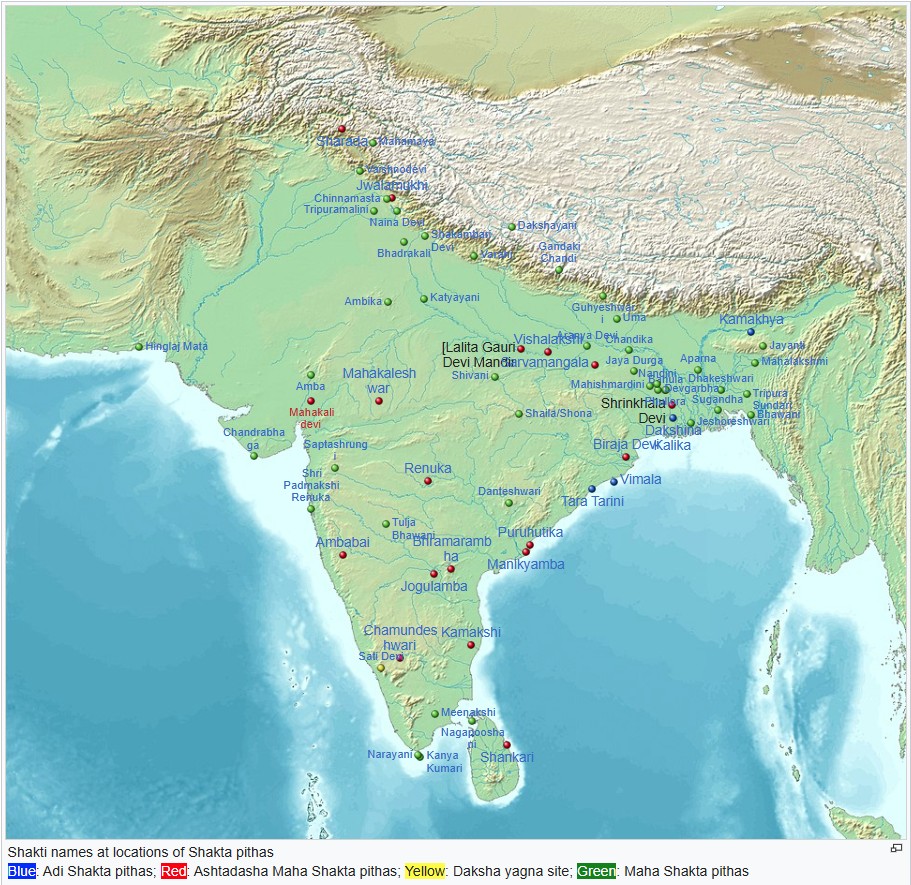
In geomancy the Shakti Peethas are known for their energetically intense, healing and animating impacts. Shakti is usually defined as the “female” aspect of Shiva. Its polarity with the male aspect symbolized by the lingams is defined in such a way that shakti is the formless life energy that brings the “form” (lingam) to life.
From this point of view Shakt represents the natural flow of energies of mother earth that
The legend of the burning of Shiva`s wife Sati
A mythological version of the origin of the Shakti Peethas is described in the legend about the burning of Shiva`s wife Sati.
“The father of Shiva`s wife Sati was a son of Brahma named Daksha. Daksha hated Shiva for his superiority to Brahma or in other versions for being a yogi and outcast of society. With a desire to take revenge on Lord Shiva Daksha planned to perform a high hinduistic ritual inviting all the deities to the ritual except Shiva. The fact that Shiva was not invited enraged Sati. She expressed her desire to attend the yagna to Shiva, who tried his best to dissuade her from going. Shiva eventually relented and Sati went to the yagna. Sati, being an uninvited guest, was not given any respect at the yagna. Furthermore, Daksha insulted Shiva. Sati enraged and unable to bear her father’s insults toward her husband jumped into the sacred sacrificial fire and was burnt to death.
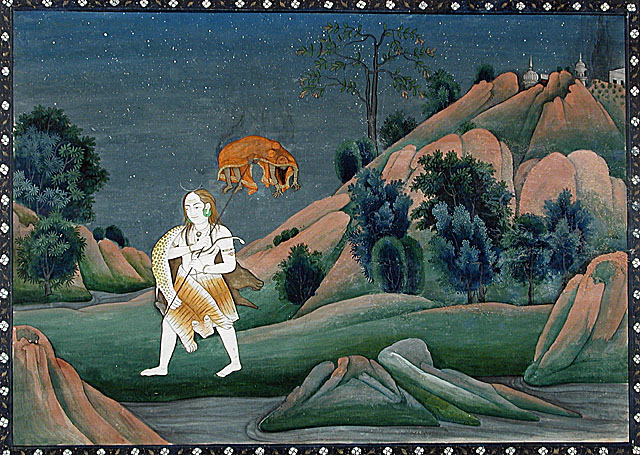
Seeing this Shiva was so struck with pain and rage that he appeared at the site of the sacrifice in the form of the Virabhadra avatar destroyed the fire place and cut off Daksha `s head. Shiva was so furious that he didn’t stop fighting until the gods prayed to Vishnu for help. Shiva picked up the remains of Sati’s body and performed the Tandava, the celestial dance of destruction, across all creation. In order to stop the destruction Vishnu used his weapon named the Sudarshana Chakra, which cut Sati’s corpse into pieces so that. the various parts of the body fell at several spots all through the Indian subcontinent and formed sites which are known as Shakti Peethas today. (read the wikipedia article)
The Site of the Daksha Yagna in Taurus with Pisces
The site of Daksha Yagna the place chosen for the ritual which ended in the tragical suicide of Shiva`s wife Shakti is called Ammarakkallu and identified as the Kottiyoor or Vadakkeshwaram Temple in Kerala, South India. The Kottiyoor Temple consists of two twin temples only separated by a river: Akkare Kottiyoor and Ikkare Kottiyoor. The main festival here is the Vysakha pilgrimage that lasts for 27 days.
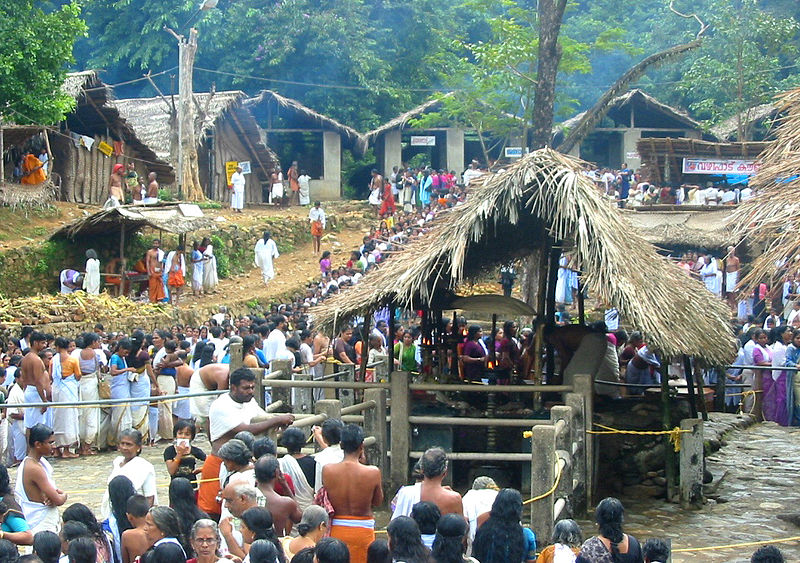
Astrogeographical resonance coordinates of the supposed site where the supposed burning of Sati in the ritual fire organized by her father Daksha took place for morphogenetic field level 3 which describes how the site is embedded in the landscape: one coordinate is located in mystic spiritual water sign Pisces the sign of the subtle, plane, spirituality itself, the dream world, legends, fairy-tales, m,sytification, mythology, music, the otherworld and most important astrologeographical factor for temple sites.
The 2nd coordinate is in solid, fixed earth sign Taurus sign of the earth, grounding, growing roots, agriculture, food, wealth, market places, town centers, settling down, possession of territory and important resonator for the earth mother. The combination of Pisces with Taurus includes topics of the confrontation of nomadic (Pisces) with agricultural (Taurus) societies (see the example of the Jerusalem Temple Mount). The use of temporary temples instead of solid buildings can be directly attributed to this sign combination.
Astrogeographical resonance degrees of the site of the Daksha Yagna for morphogenetic field level 1 (region) which describes the supraregional, nation-wide, global topics of the site: one coordinate is located at 10° in highly magnetic royal fire sign Leo sign of the sun, light, heart, power plants, self-expression. The 2nd coordinate is located at 15° in practical air sign Gemini the sign of signposts, technology, practical magic, communication, learning and interfaces.
The Shakti Peetha Shrines in Astrology
There are different lists of the most important Shakti Peetha shrines – one categorizes 18, another has 51, one has 60 and yet another one 108 major shrines.The following list of the astrogeographic positions of the more than 1200 year old 18 Maha Shakti Peetha Shrines from the Ashta Dasa Shakthi Peetha Stotram by Adi Shankara who lived between 788-820 CE.

The above list of the astrogeographic positions of the Maha Shakti Peetha Shrines shows the two water signs Cancer and Pisces as their most frequent astrogeographical resonators. The role of Cancer as the sign of motherhood, conception, pregnancy, the uterus, the vagina, caves, the moon, emotional roots, feeling at home and family life is an indicator for the important role of the Shakti Peetha shrines as sites of the worship and prayer to the earth mother for fertility and the support of family life and having children. At the same time Cancer represented also the most important resonator for the shrines of the male aspect of Hindu God Shiva the 12 Jyotirlinga shrines too. Read my blog about the Jyotirlinga Shrines.

The role of water sign Cancer
The Kamakhya Mother Goddess Temple (Kamarupa Peetham) in Guwahati
For the relationship of temples of the fertility aspect of the mother goddess located in Cancer with Scorpio to the topic of female sexuality and the vagina compare: Utroba Cave 3000 – year old Vagina or Womb Cave Temple. Another type of temples dedicated to the mother goddess as the earth mother is located in Cancer with Taurus (Hagia Sophia in Cancer with Taurus)
The Kamakhya Mother Goddess Temple or Karamurapa Peetham in Guwahati, Assam is one of the oldest, most famous and most important of the Shakti Peetha Shrines.
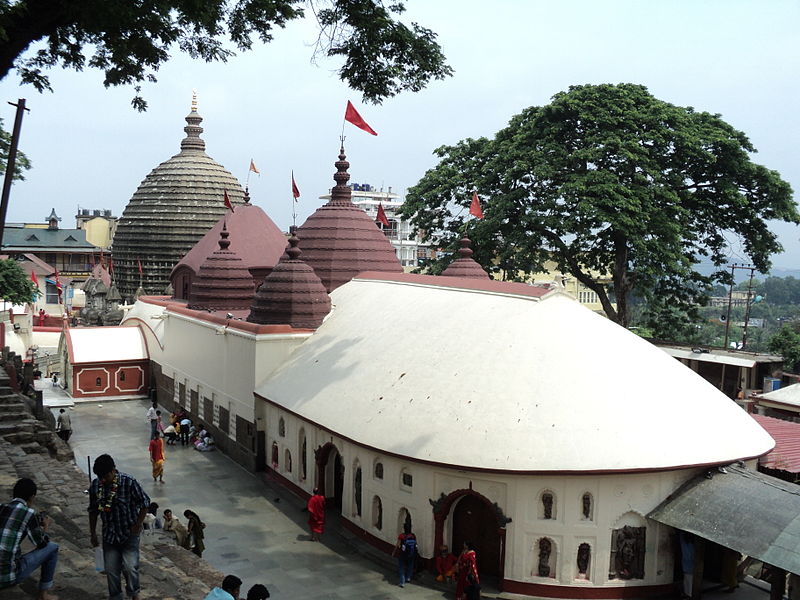
The Kamakhaya Mother Goddess Temple in Guwahati, Assam, India is considered to be one of the oldest of the Shakti Peethas. The main annual temple festival called Ambubachi Mela is celebrated for one full lunar cycle of 28 days from around the middle of the month of June “as the celebration of the yearly menstruation course of goddess Kamakhya. It is believed that the presiding goddess of the temple, Devi Kamakhya, worshipped as the Mother Shakti, goes through her annual cycle of menstruation during this period of the year. It is also believed that during the monsoon rains the creative and nurturing power of the ‘menses’ of Mother Earth becomes accessible to devotees at this site during the festival. There is no idol of the presiding deity in the temple but she is worshipped in the form of a yoni-like stone instead over which a natural spring flows”. (source: wikipedia article)
Astrogeographic position of the Kamakya Temple for morphogenetic field level 4 which describes the atmosphere of the temple itself: the shrine is located in female, emotional water sign Cancer together with highly defensive, mental water sign Scorpio. Cancer appears here as the sign of motherhood, conception, pregnancy, the uterus, vagina, caves, moon, emotional roots, feeling at home and family life.Together with Cancer Scorpio is on of the two most important indicators for caves in general. Apart from that Scorpio suggests an emphasis on ritualistic worship and could stand for the important role of sacrifice at the site particularly in ancient times. As the most important astrological indicator for death, demons, trauma, pain and revenge it also stands for the resonance with the topics of the intensely negative experiences of women in society through suppression, exploitation, rape, ritualistic burning and disrespect of their rights. In this way Scorpio is the plausible indicator of the darker forms of the Mother Goddess here which are represented by Kali Devi and Tara Devi and others at the site (see the text below about the Mahavidyas).
At the Kamakhaya Mother Temple a large number of elements of the water sign Cancer can be observed: all elements of a temple for the earth mother, the caves below the temple building as the site of the sanctum sanctorum, the yoni (vagina) form of the shrine and the natural water spring. And the importance of the position of this particular temple in Cancer is of course further emphasized by its role among the 18 Maha Peetha Shrines as the yoni of the Mother Goddess Shakti.
At the same time the combination of Cancer with Scorpio is also a frequent astrogeographical constellation at important sites of resonance for the male aspects of Shiva like for example the source of the River Ganges, the City of Varanasi, the site of the Kailashnath Mahadev Statue in Bhaktapur, Nepal, the birth place of Mahavatar Babaji and other places..
Astrogeographic position for field level 3 which describes the larger area in which the Kamakhaya Mother Temple along with the other surrounding temples for the 10 Mahvidyas and other temples is embedded: solid, conservative, history-orientated earth sign Capricorn stands for the position on a mountain and movable air sign Gemini sign of learning, diversity, neutrality and road crossings stands for bringing all kinds of different aspects even conflicting ones together.

The 10 Mahavidyas are a group of ten aspects of the Goddess Shakti or Parvati the female aspect of Shiva in Hinduism. They are seen as Wisdom Goddesses representing a spectrum of feminine divinity, from the horrific goddesses at one end, to the gentle at the other. Their names are: Kali, Tara, Shodashi, Bhuvaneshvari, Bhairavi, Chhinnamasta, Dhumavati, Bagalamukhi, Matangi, and Kamala.
Shakti Peetha Temples
Tara Tarini Shakti Peetha
Tara Tarini Temple on the Kumari hills near Brahmapur city in Ganjam District, Odisha is considered as the Breast Shrine (Sthana Peetha) and manifestation of Adi Shakti. The hinduistic form of goddess Tara (meaning: star) relates to the second of the ten Mahavidyas or “Great Wisdom goddesses“, and is a form of Shakti, the tantric manifestations of the goddess.

ph: Nayansatya, GFDL
Astrogeographic position of Tara Tarini Temple for morphogenetic field level 4 which describes the atmosphere and energetical topics of the temple itself: the temple has one coordinate in air sign Gemini sign of signposts, intelligence, communication, learning, education, technology, road crossings, interfaces, practical solutions with creative innovative air sign Aquarius sign of the sky, heaven, paradise, flying, inspiration, self-finding, castelessness, revolution, illumination and the stars.
Kalighat Kali Temple
Kalighat Kali Temple in Kalighat, Kolkata dedicated to the Hindu goddess Kali. Kalighat represents the site where the toes of the right foot of Sati fell.

Astrogeographical position of Kalighat Kali Temple for morphogenetic field level 4 which describes the atmosphere and energetical topics of the temple itself: one coordinate is located in service orientated air sign Libra sign of harmony, balance, beauty, love, relationship, marriage, peace, openness, angels. The 2nd coordinate stretches between highly defensive, solid, fixed water sign Scorpio sign of the underworld. trauma, pain and dynamical fire sign Sagittarius sign of shamanism, priest castes, initiation, time-measurement, cycles and seasons, fire rituals, growth and healing.
Vimala Shakti Peetha Temple
The 9th century Vimala Temple located within the Jagannath Temple complex in Puri, Odissa dedicated to goddess Vimala holds a 6th century icon of the goddess. Vimala is considered as the female aspect of Jagannath – a form of Vishnu. She is referred to as a form of Katyayani – one of the nine forms of Durga.
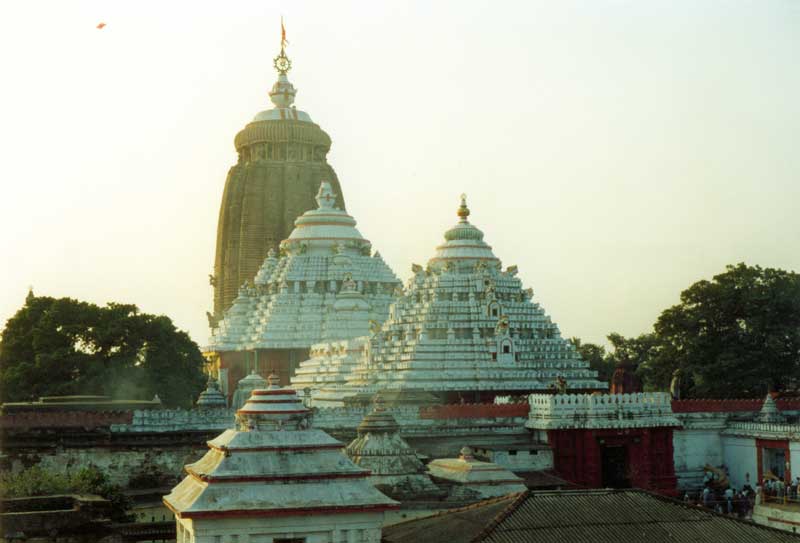
Astrogeographic position of Vimala Temple for morphogenetic field level 4 which describes the atmosphere and energetical topics of the temple itself: one coordinate is located in solid, fixed earth sign Taurus sign of the earth, grounding, roots, agriculture, food, wealth, income, gravity and local energetical centers. 2nd coordinate is in service orientated air sign Libra sign of harmony, balance, beauty, love, relationship, marriage, peace, openness, angels.
Biraja Temple
Biraja Temple in Jajpur, Odissa is a 13th century Durga Devi temple where the goddess is worshipped in the form of Biraja. The place is considered as the site where the navel of Sati fell.
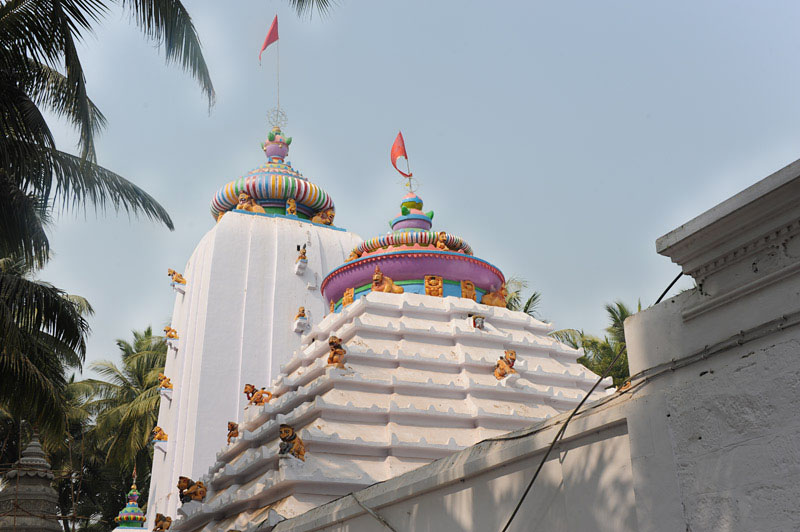
Astrogeographic position of Vimala Temple for morphogenetic field level 4 which describes the atmosphere and energetical topics of the temple itself: one coordinate is located in solid, fixed earth sign Taurus sign of the earth, grounding, roots, agriculture, food, wealth, income, gravity and local energetical centers. The 2nd coordinate is located in mystic spiritual water sign Pisces the sign of the subtle, plane, spirituality itself, the dream world, legends, fairy-tales, m,sytification, mythology, music, the otherworld and most important astrogeographical factor for temple sites.
Kamakshi Devi Temple
Kamakshi Amman Temple in the historic temple city of Kanchipuram, near Chennai, Tamil Nadu is dedicated to the ultimate form of Goddess Lalitha Maha Tripurasundari (Parvati). The Image of the main Deity, Kamakshi, is seated in a majestic Padmasana, a yogic posture signifying peace and prosperity, instead of the traditional standing pose. The goddess holds a sugarcane bow and bunch of five flowers in the lower two of her arms and has a pasha (lasso), an ankusha (goad) in her upper two arms.

Astrogeographic position of Kamakshi Aman Temple for morphogenetic field level 4 which describes the atmosphere of the temple itself: one coordinate is located in mystic spiritual water sign Pisces the sign of the subtle, plane, spirituality itself, the dream world, legends, fairy-tales, mystification, mythology, music, meditation, the otherworld and most important astrogeographical factor for temple sites. The 2nd coordinate stretches across the cardinal divide of the winter solstice between highly dynamical fire sign Sagittarius sign of thinking, philosophy, shamanism, priests, fire rituals and solid conservative earth sign Capricorn sign of tradition, governments, state cult.
Tripura Sundari Temple
The Tripureshwari Devi shrine in Udaipur, Rajasthan was built by King Dhanya Manikya in 1501 AD in the BengaliEk-ratna style following a dream vision in which Tripurari Devi instructed the king to built the temple on a small hill at the site of an already existing Vishnu temple. That brought the king into a dilemma – as the construction involved the problem of replacing a Vaishnava tradition by a Shivaite deity at the place. The temple is therefore regarded as an example of spiritual unification of the 2 religious mainstreams in India.

ph: Soman, GFDL
Astrogeographic position of the Tripura Devi Temple for morphogenetic field level 4 which describes the atmosphere of the temple itself: one coordinate is located in emotional water sign Cancer the sign of motherhood, gender, fertility and the stomach. The 2nd coordinate is in solid, conservative, strict earth sign Capricorn the sign of tradition, history, rules and regulations, government institutions, state cult, bones. The confrontation of 2 opposite signs at the temple site can be related to the history of the site of the confrontation between the Shivaite and Vaishnava traditions – which are often explained as functioning as opposites and aspects of polarity within Hindu religion.
Purnagiri Devi Temple
Purnagiri Devi Temple near Tanakpur, U.P. is located in the 2 fire signs Leo and Aries.
Maya Devi Temple in Haridwar
Maya Devi Temple in the holy city of Haridwar is a 11th century temple dedicated to goddess Maya (meaning “wisdom and extraordinary power” and in later periods “illusion”). It is believed that the heart and navel of goddess Sati fell in the region where the temple stands today. The inner shrine consists of Murtis (icons) of goddesses with Maya in the center, Kali on the left, Kamakhya on the right. The goddess Maya is strongly related to Vaishnava religion and seen as one of the 9 Shaktis of Vishnu.

ph: Ekabhishek, ccbysa 3.0, ccbysa3.0
Astrogeographic position of Maya Devi Temple for morphogenetic field level 4 which describes the atmosphere of the temple itself: one coordinate is in solid, conservative, strict earth sign Capricorn sign of tradition, history, stability of government institutions, state cult, rules and regulations. The 2nd coordinate is in solid fixed earth sign Taurus sign of the earth, grounding, roots, agriculture, food, wealth, bhumi, territorial possessions, market places and local energetical centers. The combination of Taurus with Capricorn points at the function of the temple as a central shrine for annual fertility rites related to agriculture, food production and protection of ground from floods and territory from foreign invasion and influences.
Guhyeshwari Adi Shakti Peetha Temple
Guhyeshwari Temple in Kathmandu, Nepal is dedicated to Guhyeshwari (Guhyekali) or Adi Shakti is an important pilgrimage destination for Hindus, especially for Tantric worshipers. The temple was built in the 17th century . One view is that Guhyeshwari Temple marks the spot where Sati’s hips or hind part is said to have fallen.
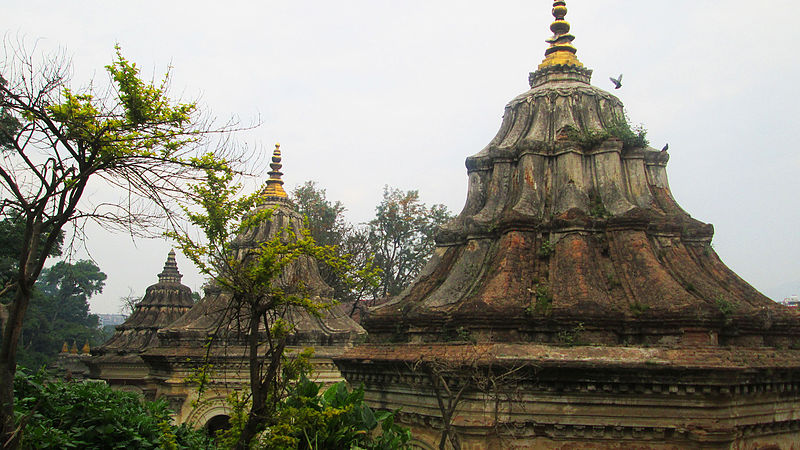
Astrogeographic position of Guhyeshwari Adi Shakti Peetha Temple for morphogenetic field level 4 which describes the atmosphere of the temple itself: the temple site has one coordinate in highly magnetic royal fire sign Leo sign of the sun, light, heart, power plants, self-expression, sexuality. The 2nd coordinate stretches between highly defensive, solid, fixed water sign Scorpio sign of the underworld. trauma and pain and dynamical fire sign Sagittarius sign of shamanism, priest castes, initiation, time-measurement, cycles and seasons, fire rituals, growth and healing.
Muktinath Shakti Peetha
Muktinath is a Vishnu temple located at 3745 m altitude at the foot of the Thorong La mountain pass in Mustang, Nepal. Sati Devi’s forehead is believed to have fallen there.

Astrogeographic position of Muktinath Shakti Peetha for morphogenetic field level 4 which describes the atmosphere of the temple itself: one coordinate is located in emotional water sign Cancer the sign of motherhood, conception, gender, fertility, the uterus and stomach. the 2nd coordinate is located in mystic spiritual water sign Pisces the sign of the subtle, plane, spirituality itself, the dream world, legends, fairy-tales, mystification, mythology, music, meditation, the otherworld and most important astrogeographical factor for temple sites.
